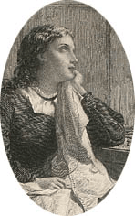

Edward thought he had never, even in his wildest dreams, imagined a figure of such exquisite and interesting loveliness. The wild beauty of the retreat, bursting upon him as if by magic, augmented the mingled feeling of delight and awe with which he approached her, like the fair enchantress of Boiardo or Ariosto, by whose nod the scenery around seemed to have been created, an Eden in the wilderness.
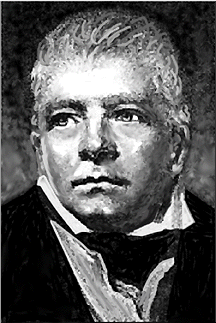 Like Childe Harold’s Pilgrimage, Waverly seemed entirely new when it first appeared, under anonymous authorship, in 1814; both the critics and the public, for once in tune, grasped the magnitude of Scott’s accomplishment. As Byron himself wrote in his review for the British: "We are unwilling to consider this publication in the light of a common novel whose fate it is to be devoured with rapidity for a day, and afterwards forgotten forever..." Other novels in the Romantic style of Waverly began appearing almost at once, beginning with Balzac and later Mérimée in France, Pushkin in Russia, Fennimore Cooper in America and Emily Brontë and Scott himself in Britain. In the novels of all these writers a collision of two different cultures, one civilized and the other savage, is thrown against the backdrop of a beautiful, wild landscape. At the heart of the juxtaposition is the femme fatale, the Flora Mac-Ivor character—a siren of good heart and noble spirit who turns the hero’s loyalties from his own culture into the embrace of the other.
Like Childe Harold’s Pilgrimage, Waverly seemed entirely new when it first appeared, under anonymous authorship, in 1814; both the critics and the public, for once in tune, grasped the magnitude of Scott’s accomplishment. As Byron himself wrote in his review for the British: "We are unwilling to consider this publication in the light of a common novel whose fate it is to be devoured with rapidity for a day, and afterwards forgotten forever..." Other novels in the Romantic style of Waverly began appearing almost at once, beginning with Balzac and later Mérimée in France, Pushkin in Russia, Fennimore Cooper in America and Emily Brontë and Scott himself in Britain. In the novels of all these writers a collision of two different cultures, one civilized and the other savage, is thrown against the backdrop of a beautiful, wild landscape. At the heart of the juxtaposition is the femme fatale, the Flora Mac-Ivor character—a siren of good heart and noble spirit who turns the hero’s loyalties from his own culture into the embrace of the other.
With Waverly Walter Scott did not create an entirely new genre so much as marry together two extant forms—the popular Gothic novels of the late 18th century, and a newer sort of regional fiction, rich in satire and local dialect, that began stirring in literary circles after 1800. Gothic fiction can trace itself back to Horace Walpole’s The Castle of Otranto (1764). Other practitioners included Charlotte Smith (Montalbert), Matthew Lewis (The Monk) and Ann Radcliffe (The Mysteries of Udolpho, which Jane Austen satirized so well in Northanger Abbey). Scott was fond of Radcliffe in particular. Though viewed by modern critics as an 18th century Anne Rice, a hack writer of specters, moldering castles and fainting damsels, her lyrical descriptions of the wild landscape and ruins influenced him and found their way into the Scottish highlands. "Mrs. Radcliffe," he wrote magnanimously, "has a title to be considered the first poetess of romantic fiction." Edward Waverly confronts no ghosts, but like a Gothic hero he does wander in the wilderness, sleeping in melancholy manors and visiting rustic habitations. Scott gives us a description of a Highland robber’s cave that could have come right out of the pages of Udolpho:
The interior of the cave, which here rose very high, was illuminated by torches made of pine-tree, which emitted a bright and bickering light, attended by strong, though not unpleasant odour. Their light was assisted by the red glare of a large charcoal fire, round which were seated five or six armed Highlanders, while others were indistinctly seen couched on their plaids, in the more removed recesses of the cavern. In one large aperture, which the robber facetiously called his spence (or pantry), there hung by the heels the carcasses of a sheep, or ewe, and two cows lately slaughtered.The difference between Waverly and a Gothic novel is that the setting is more than a spooky backdrop—the local people and history are crucial to the development of the story. In a sense, they are the story. This regional, folk-oriented writing, rich in quaint habits and dialect, was pioneered by Maria Edgeworth, the daughter of a wealthy English landowner in Ireland. Her best known novels, Castle Rackrent and The Absentee, contain humorous and often cynical portraits of the impoverished Irish peasantry and their foolhardy landlords. Castle Rackrent is narrated by Thady, faithful servant to the Rackrent family, who describes the goings on of his master and mistress as though he were telling you about it in the pub:
All he asked—God bless him!—was to live in peace and quietness, and have his bottle or his whiskey-punch at night to himself. Now this was little enough, to be sure, for any gentleman; but my lady couldn’t abide the smell of the whiskey-punch.‘My dear,’ says he, ‘you liked it well enough before we were married, and why not now?’
‘My dear,’ said she, ‘I never smelt it, or I assure you I should never have prevailed upon myself to marry you.’
Edgeworth’s method of describing local life in the local idiom was enthusiastically taken up by Scott in Waverly, and developed even further. On his way to the robber’s cave mentioned above, Edward converses with Fergus Mac-Ivor’s Highland attendants:
After journeying a considerable time in silence, he could not help asking, "Was it far to the end of their journey?"Scott once wrote: "If I could but hit Miss Edgeworth’s wonderful power of vivifying all her persons, and making them live as beings in your mind, I should not be afraid." He need not have feared. Although casual readers complained of the Scottish brogue and manners that embroider the novel, they are entirely believable and give the characters a breath of life and originality."Ta cove was tree, four mile; but as Duinhé-wassel was a wee taiglit, Donald could, tat is, might—would—should send ta curragh."
Sir Walter gave due credit to Edgeworth and Radcliffe, his two muses of inspiration. Yet Waverly is in a class by itself, and even after reading Udolpho and Castle Rackrent Scott’s novel is an astonishment, a great leap forward in fiction that was not to be equalled, even by Ulysses a century later (he was not handicapped by genius, as Joyce was). His breakthrough was an intuitive one, a working solution to the problem of fusing the Gothic and regional styles: introduce a local character in a romantic role. Radcliffe’s lovers were always of the same culture and class, and their sentiment was idealized; Edgeworth’s subjects either made calculated marriages for money, or threw themselves into folly by marrying beneath them. Romantic fiction introduces a new kind of relationship—a personal and highly emotional attachment that rises above clashing cultures and calamitous events. Enter Flora Mac-Ivor.
Cooper was an unlikely author; according to his daughter he first took up writing out of disgust for the trashy novels being imported from England. His first book, Precaution, was a Jane Austen affair. His friends praised it but suggested that, as an American, he should write novels that actually took place in America. This had been tried before, by Charles Brockden Brown and others, without much success. But Cooper found in Scott the perfect design for the American novel. The wild landscapes, local customs and clash of cultures existing on the frontier were particularly suited to Romantic fiction. His first effort, The Spy (1821), drew largely from Waverly’s historical aspects. Instead of the ‘45 uprising we have the Revolutionary War, and in place of Bonnie Prince Charlie we find George Washington. However it was his next novel, The Pioneers (1823), that was to secure his reputation. It was the first of his popular "Leatherstocking Tales", chronicling the life of the woodsman and scout Nattie Bumppo, and he set it on Lake Otsego, where his father had founded Cooperstown in 1786. Like Scott and Edgeworth, he described the local color of the region from firsthand accounts or his own childhood memories.
 The Pioneers depicts a frontier in the process of transforming from a wilderness of hunters, trappers and backwoodsmen to permanent settlement. The lands are held by the jovial and egalitarian Judge Temple, a widower who brings his only daughter, Elizabeth, home to the new settlement of Templeton at the beginning of the story. The motley patchwork of the American hinterlands—retired German soldiers, French shopkeepers in exile, Quakers, missionaries—is peaceful, and the setting is idyllic, but there is tension between the Judge and the remnant of the old frontiersmen, namely Natty Bumppo ("the Leatherstocking") and the old Mohican chief Chingachook. They are joined by Edward Oliver, a mysterious young man who claims title to the same land by way of a Delaware chief that he may or may not be related to. Though attracted to Elizabeth, Edward holds the Judge to be his greatest enemy, a man who would bring ruin to the land.
The Pioneers depicts a frontier in the process of transforming from a wilderness of hunters, trappers and backwoodsmen to permanent settlement. The lands are held by the jovial and egalitarian Judge Temple, a widower who brings his only daughter, Elizabeth, home to the new settlement of Templeton at the beginning of the story. The motley patchwork of the American hinterlands—retired German soldiers, French shopkeepers in exile, Quakers, missionaries—is peaceful, and the setting is idyllic, but there is tension between the Judge and the remnant of the old frontiersmen, namely Natty Bumppo ("the Leatherstocking") and the old Mohican chief Chingachook. They are joined by Edward Oliver, a mysterious young man who claims title to the same land by way of a Delaware chief that he may or may not be related to. Though attracted to Elizabeth, Edward holds the Judge to be his greatest enemy, a man who would bring ruin to the land.
Elizabeth is a quiet character, and though brave and honorable she is no Flora Mac-Ivor. Her love of Edward is not doomed—or even difficult to resolve. And the dispute between the pioneers and frontiersmen is more a lifestyle issue than a collision of cultures. These shortcomings seem to have been evident to James Fenimore, and by the time we come to The Last of the Mohicans (1826) he has remedied them with a starker, more fateful contrast: between the European and Native American. Set during the French and Indian wars in 1757, the much younger Bumppo (here called "Hawkeye") and Chingachook escort Cora and Alice, the two daughters of an English officer, along lake Champlain, to the safety of a fort. They are accompanied by Uncas, the son of the Mohican chief, who becomes enraptured with Cora. She is a true heroine of Romantic fiction, setting aside polite manners to treat directly with the Indians, and guarding over her more innocent sister. "Her complexion was not brown," Cooper tells us, "but it rather appeared charged with the color of the rich blood, that seemed ready to burst its bounds." Uncas dies trying to rescue her from the Hurons, and in the somber conclusion Cooper strikes to the very heart of the Romantic sentiment: the unbridgeable chasm between self and other. He has Cora’s grieving father ask Bumppo to translate his thanks to the Delawares:
"Tell them, that the Being we all worship, under different names, will be mindful of their charity; and that the time shall not be distant when we may assemble around His throne without distinction of sex, or rank, or color."The scout listened to the tremulous voice in which the veteran delivered these words, and shook his head slowly when they were ended, as one who doubted their efficacy.
"To tell them this," he said, "would be to tell them that the snows come not in the winter, or that the sun shines fiercest when the trees are stripped of their leaves."
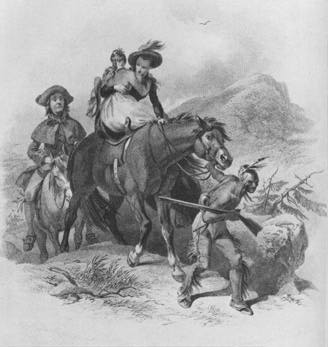
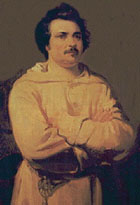
Many of the scenes in The Chouans can be traced directly to Waverly. For example, there is a clandestine meeting of Royalist lords in an old manor house that strongly resembles the robber’s cave described above. And the Chouans, the celtic natives of the region, exhibit rustic manners and speak in dialect much like the Highlanders of Scotland. As Marion Ayton Crawford writes in the introduction to her translation: "To Balzac’s great credit and advantage he had grasped the true originality of Scott’s novels. Scott had shown that society was not static as the eighteenth century had imagined and demonstrated its violent movement and change." Yet for all that Balzac missed his mark with his heroine. Mademoiselle de Verneuil is certainly an ideal femme fatale. Yet she comes from the same class and culture as the Marquis—their differences are merely political. He shares little in common with the Breton peasants that serve him, and the Chouans themselves are little more than window dressing. The truth is that Balzac was more of a historian than a writer of romance, and as each title was added to Le Comedie Humaine it tilted farther and farther towards Realism. Indeed it was not Balzac but Prosper Mérimée who was the last—and best—writer of Romantic fiction in France.
Raised in Normandy, Mérimée wrote in a controlled, classical style that nonetheless had a romantic outlook and was, at times, even brutal. Like Balzac, he began studying law, but his friend Stendhal inspired him to go down the path of literature. He published The Chronicles of the times of Charles IX in 1829, the same year The Chouans appeared. It was little more than a Waverly imitation, but in his later fiction Mérimée steered Romantic fiction in a more personal, psychological direction. Much of his best work is set on the island of Corsica, including the famous story "Mateo Falcone" and the novel Colomba (1840). In the latter we follow Lieutenant Orso della Rebbia, an enlightened Corsican of proud ancestry who had served with Napoleon, as he returns to his homeland. On the boat over he meets the English Colonel Nevel and his daughter, Lydia; soon a swimming romance is afoot. However, once on the island Orso finds himself unwilling drawn back into its tradition of family honor, vendettas and banditry. That world is epitomized by his sister, the beautiful Colomba, who pressures him to exact vengeance on the family who was responsible for the death of his father in a feud. Shortly after returning she shows him the dead man’s shirt:
"Here is your father’s shirt, Orso!"
And she threw it across his knees. "Here is the lead that killed him!" And she laid two blackened bullets on this shirt.
"Orso! Brother!" she cried, throwing herself into his arms and clasping him desperately to her. "Orso, you will avenge him!"
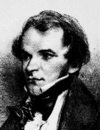 It is interesting that in Colomba the character who involves the hero in the conflict—the femme fatale—is his sister rather than a love interest. And history, a main ingredient in Waverly, is here only a muted background (Colonel Nevel and the Lieutenant chat about how they had fought at Waterloo, on opposite sides). Meanwhile the animating spirit of Romantic fiction, the pathos of two cultures colliding and the hero torn between them, has gained more depth and complexity. Though still wild and filled with rustic scenery, the genre had turned intimate, almost domestic in nature. Mérimée, a historian and general inspector of national monuments who was often described as blunt and cold, was nevertheless an acute observer of human passions and the customs and ceremonies we cloak them in; though he did not write on a grand scale his characters, particularly his women, are more lifelike than Balzac’s or Cooper’s, or even Scott’s.
It is interesting that in Colomba the character who involves the hero in the conflict—the femme fatale—is his sister rather than a love interest. And history, a main ingredient in Waverly, is here only a muted background (Colonel Nevel and the Lieutenant chat about how they had fought at Waterloo, on opposite sides). Meanwhile the animating spirit of Romantic fiction, the pathos of two cultures colliding and the hero torn between them, has gained more depth and complexity. Though still wild and filled with rustic scenery, the genre had turned intimate, almost domestic in nature. Mérimée, a historian and general inspector of national monuments who was often described as blunt and cold, was nevertheless an acute observer of human passions and the customs and ceremonies we cloak them in; though he did not write on a grand scale his characters, particularly his women, are more lifelike than Balzac’s or Cooper’s, or even Scott’s.
Once France adopted Romanticism, its place was secured, and every gentleman touring the Continent took it up as the latest fashion. It should not be surprising then that Alexander Pushkin, brought up in an aristocratic family that spoke and read French, attempted his own Russian version of the Romantic novel. He had first discovered Byron while in exile in the Caucasus, and written poetic narratives in the same style (the most popular being, of course, Eugene Onegin). His great period of prose writing came later, after he was pardoned by Nicholas I and living the stuffy life of a courtier. In The Captain’s Daughter (1836), he places the young Waverly-like hero Petr Andreevich Grinev in the path of the Pugachev rebellion against Empress Catherine. A young officer, Grinev travels through a blizzard to report to Captain Mironov at Fort Belogorsk, then precipitously falls in love with Masha, the captain’s daughter. This raises the enmity of the wretch Shvabrin, her rejected suitor, and after the rebellion erupts and the fort is overrun by Cossacks, Shvabrin betrays our Petr Andreevich to the invaders. Fortunately Pugachev himself is at hand, a hard-boiled but decent leader who takes Grinev for his protege, much as Fergus Mac-Ivor takes up Waverly.
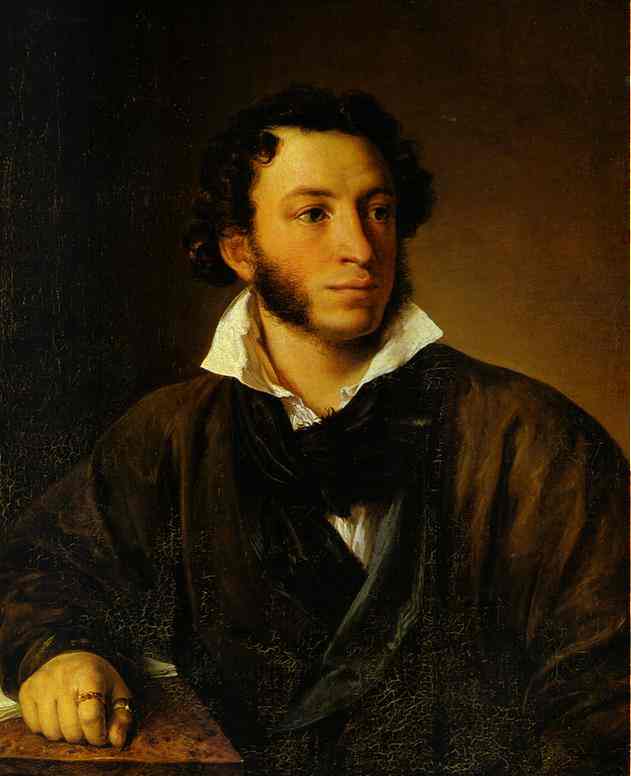 Nothing in Russian literature ever seems quite like its European counterpart, and The Captain’s Daughter, though obviously based on the fiction of Scott and Balzac, does not quite live in the same house as they do. First of all there’s Shvabrin, a real villain (villains are notably absent from Romantic novels). Then there is the fact that Grinev is never really torn between the Russian and Cossack viewpoints—he merely admires Pugachev for being an honorable man. But the real lacking is in Masha, who is more a damsel in distress than a femme fatale. Perhaps Pushkin, who was more or less inventing the Russian novel as he wrote, felt he had to start with basics. Like Tom Jones, reading The Captain’s Daughter makes you want to ask, ‘Um, haven’t I read this all before?’ We forget that they were the first of their kind.
If Pushkin’s Romantic fiction does not quite fit a European model, neither was it quite right for Russia. In the next generation, writers like Tolstoy and Dostoyevsky borrowed more from Pushkin’s realism, though Lermontov did carry on the Byron/Scott tradition for his brief life and Turgenev’s Sportsman’s Sketches are in the Romantic vein. For Pushkin himself, however, it was the end of the road—the year after The Captain’s Daughter appeared he was killed, in true romantic fashion, fighting a duel.
Nothing in Russian literature ever seems quite like its European counterpart, and The Captain’s Daughter, though obviously based on the fiction of Scott and Balzac, does not quite live in the same house as they do. First of all there’s Shvabrin, a real villain (villains are notably absent from Romantic novels). Then there is the fact that Grinev is never really torn between the Russian and Cossack viewpoints—he merely admires Pugachev for being an honorable man. But the real lacking is in Masha, who is more a damsel in distress than a femme fatale. Perhaps Pushkin, who was more or less inventing the Russian novel as he wrote, felt he had to start with basics. Like Tom Jones, reading The Captain’s Daughter makes you want to ask, ‘Um, haven’t I read this all before?’ We forget that they were the first of their kind.
If Pushkin’s Romantic fiction does not quite fit a European model, neither was it quite right for Russia. In the next generation, writers like Tolstoy and Dostoyevsky borrowed more from Pushkin’s realism, though Lermontov did carry on the Byron/Scott tradition for his brief life and Turgenev’s Sportsman’s Sketches are in the Romantic vein. For Pushkin himself, however, it was the end of the road—the year after The Captain’s Daughter appeared he was killed, in true romantic fashion, fighting a duel.
Walter Scott died in 1832. Most of his best fiction—Rob Roy, The Heart of Midlothian, Ivanhoe—had been written in the decade immediately following Waverly, and his final years saw both Sir Walter’s talents and finances in decline. Yet Romantic fiction’s last flowering was still to come, close by on the barren Yorkshire heath. This is the setting for Wuthering Heights (1847), a novel about an isolated farming family with deep, inbred passions, and their struggle against the civilizing influences of the outside world. Emily Brontë could hardly have been more different from Sir Walter Scott. Solitary and obscure, she, like her character Catherine Earnshaw, spent most of her life in the isolation of rural Yorkshire, and was close only with her father, brother, and her two sisters Charlotte and Anne. And her book was a very different sort of book from Waverly. Gone is the history, the marching troops, the curious rustic customs and the Byronic hero waylaid by adventure. Wuthering Heights, with its setting of a few square miles of moors, is Romantic fiction distilled to a simple flame.
Indeed, at first we might wonder whether this really is Romantic fiction we are reading. Yet it feels right, on a very small scale. The scene where Catherine’s ghost appears to Lockwood in his dream could have been written by Ann Radcliffe, and we see Maria Edgeworth’s hand when the old servant Joseph speaks in his quaint dialect ("Running after t’ lads, as usuald!"). And here is our wild, romantic landscape. But who is our hero? And where is the femme fatale? To answer this question we need to consider that Brontë quite naturally chose a heroine, rather than a hero, for her novel. It’s Catherine, not Heathcliff, who is the pivotal character in Wuthering Heights. She’s the one who, by marrying Edgar Linton, attempts to escape from her backwards and primitive family and live as a country gentlewoman. The reappearance of Heathcliff, her childhood love, brings about the conflict of divided loyalties familiar in all Romantic fiction. "Oh, I’m burning!" Catherine cries out at one point. "I wish I were out of doors! I wish I were a girl again, half savage and hardy, and free..." Rather than Scottish Highlanders or Mohicans or Corsicans, Brontë gives us the primitive kingdom of childhood with its powerful emotions—particularly love. Heathcliff, the ‘homme fatale’, if you will, of the story, is its savage representative; at the heart of all his sins and abuses lies his desire to win Catherine back.
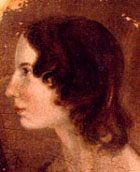 In spite of its small dimensions, Wuthering Heights is a singular masterpiece, a wild and haunting novel that disturbs even modern readers desensitized by graphic images and cinematic blood. It represents an introspective farewell for the Romantic tradition that, even then, was fading. The Pickwick Papers had already appeared in 1836, and decidedly unromantic writers like Dickens and George Eliot were bringing about the mid-century birth of Realism. The distinct, picturesque back-cultures of Europe were disappearing, and as the middle classes took up reading they developed a taste for domestic fiction that resembled their own lives. The two prototypes that Scott threw together in Waverly, the regional and Gothic, separated again. Mark Twain, Thomas Hardy and Emile Zola were soon sketching the dialects and attitudes of various subcultures, from the Mississippi backwoods to the brothels of Paris. Meanwhile writers like Wilkie Collins and Alexandre Dumas were weaving gothic motifs into their mysteries and adventure tales. Echoes of Waverly were still to be heard across the century, however. Bram Stoker’s description of Transylvanian peasants in Dracula, for example, could have been written by Mérimée, and Sienkiewicz’s With Fire and Sword resembles The Captain’s Daughter. Romanticism lingered on longest, perhaps, on the American continent it was so ideally suited for. Even today we have books and films (Snow Falling On Cedars; Dances with Wolves) built on Romantic foundations. But the archetype of Scott’s femme fatale is absent from them. She has vanished, like the Highland clans, and the Mohicans, and the peasants of Brittany.
In spite of its small dimensions, Wuthering Heights is a singular masterpiece, a wild and haunting novel that disturbs even modern readers desensitized by graphic images and cinematic blood. It represents an introspective farewell for the Romantic tradition that, even then, was fading. The Pickwick Papers had already appeared in 1836, and decidedly unromantic writers like Dickens and George Eliot were bringing about the mid-century birth of Realism. The distinct, picturesque back-cultures of Europe were disappearing, and as the middle classes took up reading they developed a taste for domestic fiction that resembled their own lives. The two prototypes that Scott threw together in Waverly, the regional and Gothic, separated again. Mark Twain, Thomas Hardy and Emile Zola were soon sketching the dialects and attitudes of various subcultures, from the Mississippi backwoods to the brothels of Paris. Meanwhile writers like Wilkie Collins and Alexandre Dumas were weaving gothic motifs into their mysteries and adventure tales. Echoes of Waverly were still to be heard across the century, however. Bram Stoker’s description of Transylvanian peasants in Dracula, for example, could have been written by Mérimée, and Sienkiewicz’s With Fire and Sword resembles The Captain’s Daughter. Romanticism lingered on longest, perhaps, on the American continent it was so ideally suited for. Even today we have books and films (Snow Falling On Cedars; Dances with Wolves) built on Romantic foundations. But the archetype of Scott’s femme fatale is absent from them. She has vanished, like the Highland clans, and the Mohicans, and the peasants of Brittany.
© 2005 by Joel Van Valin.